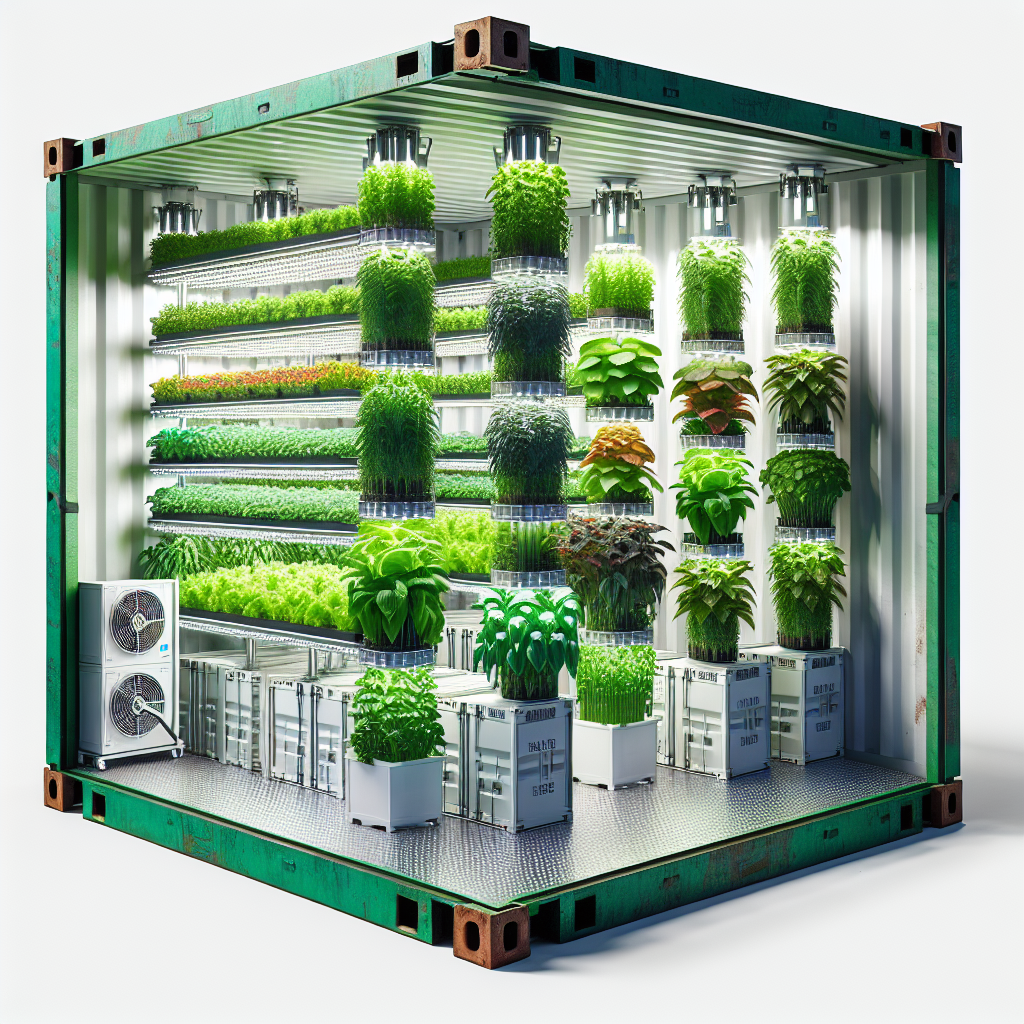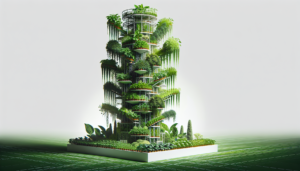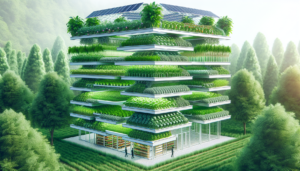
Intrigued by the idea of vertical farming in containers? Curious to know how much it costs to get started? Look no further! This article provides a concise breakdown of the expenses involved in vertical farming using containers. With a focus on affordability and sustainability, you’ll discover the key factors that contribute to the overall cost, ultimately helping you decide if this innovative farming technique is within your reach. So, let’s explore the exciting world of vertical farming and uncover its price tag!
Cost Factors
When it comes to vertical farming in containers, there are various cost factors that you need to consider. From the size of the container to the equipment and infrastructure required, each element plays a crucial role in determining the overall cost and success of your venture. Let’s explore these cost factors in detail.
Container Size
The size of the container you choose for your vertical farm can significantly impact the cost. Small containers, typically measuring around 10-20 feet, are suitable for beginners or those with limited space. They require less initial investment and can be easily managed. On the other hand, medium containers, ranging from 20-40 feet, offer more space to grow a wider variety of crops, but come at a higher price point. Large containers, exceeding 40 feet, provide ample room for high-volume production but require a substantial upfront investment. Additionally, custom containers offer flexibility but may come with higher costs due to customization.
Equipment and Infrastructure
To ensure optimal growth conditions for your plants, you’ll need various equipment and infrastructure. This includes climate control systems to regulate temperature, humidity, and CO2 levels, as well as grow lights to provide the necessary light spectrum for photosynthesis. HVAC systems are crucial for maintaining the ideal environment inside the container, while irrigation systems ensure proper water distribution. Vertical racks maximize space utilization, and monitoring and automation systems help streamline operations. Depending on your specific needs, additional equipment like seeding machines or nutrient mixing systems may also be required, each adding to the overall cost.
Crop Selection
The choice of crops you decide to grow in your vertical farm will greatly influence your costs and potential profitability. Leafy greens, such as lettuce or spinach, are popular choices due to their high demand and relatively short growth cycle. Herbs also offer a great opportunity as they can be grown efficiently in controlled environments. Crops like tomatoes or strawberries can be profitable but typically require more advanced growing techniques and equipment. Microgreens, known for their intense flavors and high market value, are another viable option. Additionally, there are various other specialty crops like edible flowers or medicinal herbs that can cater to niche markets and offer unique selling points.
Lighting and HVAC Systems
The lighting and HVAC systems play crucial roles in vertical farming operations. LED grow lights have become the industry standard due to their energy efficiency and ability to provide the optimal light spectrum for plant growth. While the initial investment in LED lights may be higher, their long-term cost savings make them a worthwhile choice. Efficient HVAC systems are essential to maintain the right temperature and humidity levels within the container. By carefully selecting lighting and HVAC systems, you can minimize energy consumption and reduce operational costs in the long run.
Labor Costs
The cost of labor is an important consideration in any vertical farming operation. Skilled labor is necessary for tasks such as crop management, harvesting, and quality control. Hiring experienced personnel with a background in plant science or horticulture can ensure the success of your farm but might come at a higher cost. To mitigate labor costs, many vertical farms invest in automation and robotics. Automated systems can handle tasks like seeding, transplanting, and harvesting, reducing the need for manual labor and optimizing productivity.
Maintenance and Operating Expenses
In addition to initial setup costs, you must consider ongoing maintenance and operating expenses. Energy costs can be significant, depending on the size of your farm and the efficiency of your equipment. Water costs, especially in arid regions, should be taken into account, as vertical farms typically require regular watering. Fertilizer and nutrient costs are necessary to maintain optimal plant nutrition. Additionally, seed costs, pest and disease control measures, labor costs, and insurance should all be factored into your operating budget.
Location and Utilities
The location of your vertical farm and access to utilities can impact costs in various ways. Urban areas may offer proximity to markets and a higher demand for locally grown produce but can also come with higher land or lease expenses. Rural areas, on the other hand, may offer more affordable land options but might require additional infrastructure development, such as building utility connections or roads. Assessing the availability of water and electricity in your desired location is crucial, as accessing these utilities can vary in cost depending on the infrastructure requirements.
Initial Investment vs. Long-term Costs
When considering the cost of vertical farming, it’s important to evaluate both the initial investment and the long-term costs. The purchase or lease of the container itself is a significant upfront expense. Installation and setup costs may involve site preparation, container customization, and securing necessary permits. Maintenance and repair expenses should be considered as well, as wear and tear or equipment failures are inevitable over time. Budgeting for future replacement or upgrades is essential to ensure the sustainability and efficiency of your farm. Finally, ongoing operating expenses, such as energy and water costs, should also be factored into your long-term financial planning.
Financial Assistance and Incentives
To help mitigate the initial investment and operating costs, it’s worth exploring financial assistance and incentives available for vertical farming. In some regions, government grants or loans may be available to support sustainable agricultural initiatives. Tax credits or incentives related to energy efficiency or environmental conservation could also provide financial relief. Researching these options and consulting with local agricultural organizations can help you identify potential sources of funding and incentives to make your vertical farming venture more cost-effective.
ROI and Profitability
Ultimately, assessing the return on investment (ROI) and profitability potential of your vertical farm is crucial. Calculating ROI involves comparing the initial costs and ongoing expenses against the projected revenue. Profit margin analysis helps determine whether your chosen crops and market prices will yield a profitable return. Assessing market value and demand for your chosen crops can also give you insights into potential profits. As your farm scales, economies of scale will come into play, reducing production costs per unit. Lastly, consider factors like sustainability and consumer preferences, as eco-friendly practices and locally grown produce can contribute to higher market value and increased profitability in the long run.
In conclusion, the cost of vertical farming in containers depends on a multitude of factors. By carefully considering the container size, equipment and infrastructure requirements, crop selection, lighting and HVAC systems, labor costs, maintenance and operating expenses, location and utilities, as well as the balance between initial investment and long-term costs, you can develop a comprehensive cost analysis. Exploring financial assistance and incentives while assessing ROI and profitability potential will help you make informed decisions and embark on a successful and economically viable vertical farming journey.







